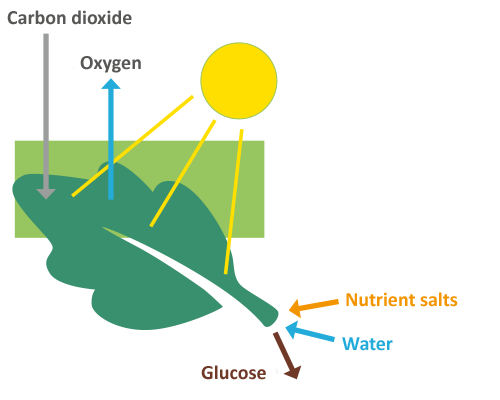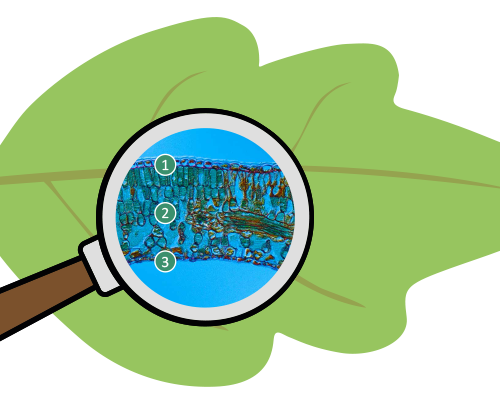The leaf
This page is only available for mobile

The leaf: an engineering marvel
Discover the fascinating processes inside a leaf.

Green power plant
Under the influence of sunlight, oxygen and glucose are produced in the green chloroplasts of the leaf cells from carbon dioxide, water, and nutrient salts. This process is called photosynthesis; it is a prerequisite for human and animal life on our earth. The oxygen is released into the air and the sugar is converted into components of the plant, for example into cellulose. To do this, the sap must be directed from the leaves to the tips of the roots. In the tree this happens in the phloem layer under the bark.


Structure of a leaf
Even a very thin leaf has a fine, multilayer structure.
1. Outer skin (epidermis)
A waterproof layer of wax on the outer skin on the upper side protects against dehydration.
2. Leaf tissue (parenchyma)
Underneath is a tightly packed layer of elongated cells with many chloroplasts. This loosely packed, sponge-like tissue is used for gas exchange during photosynthesis.
3. Gap openings (stomata)
The outer skin on the underside of the leaf has many small pores with guard cells. Through these gap openings gases exchange with the air, and water vapor is released.
